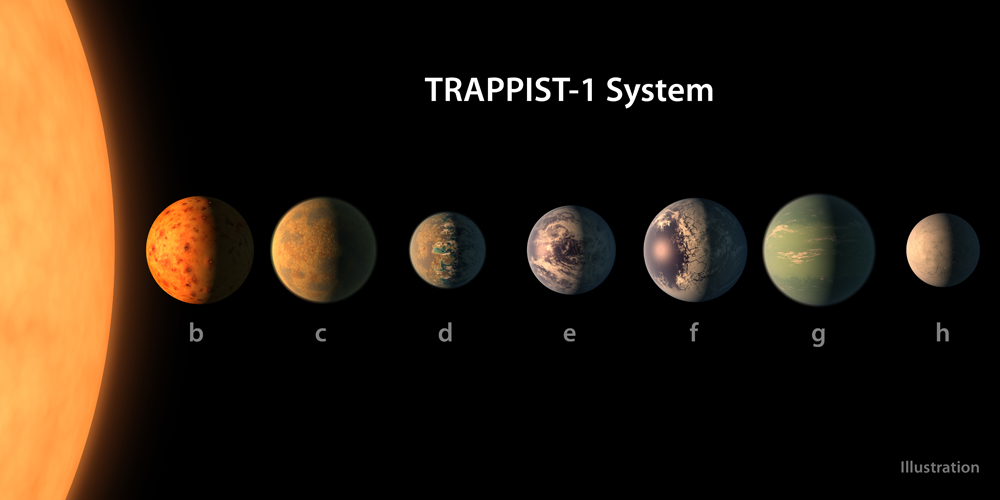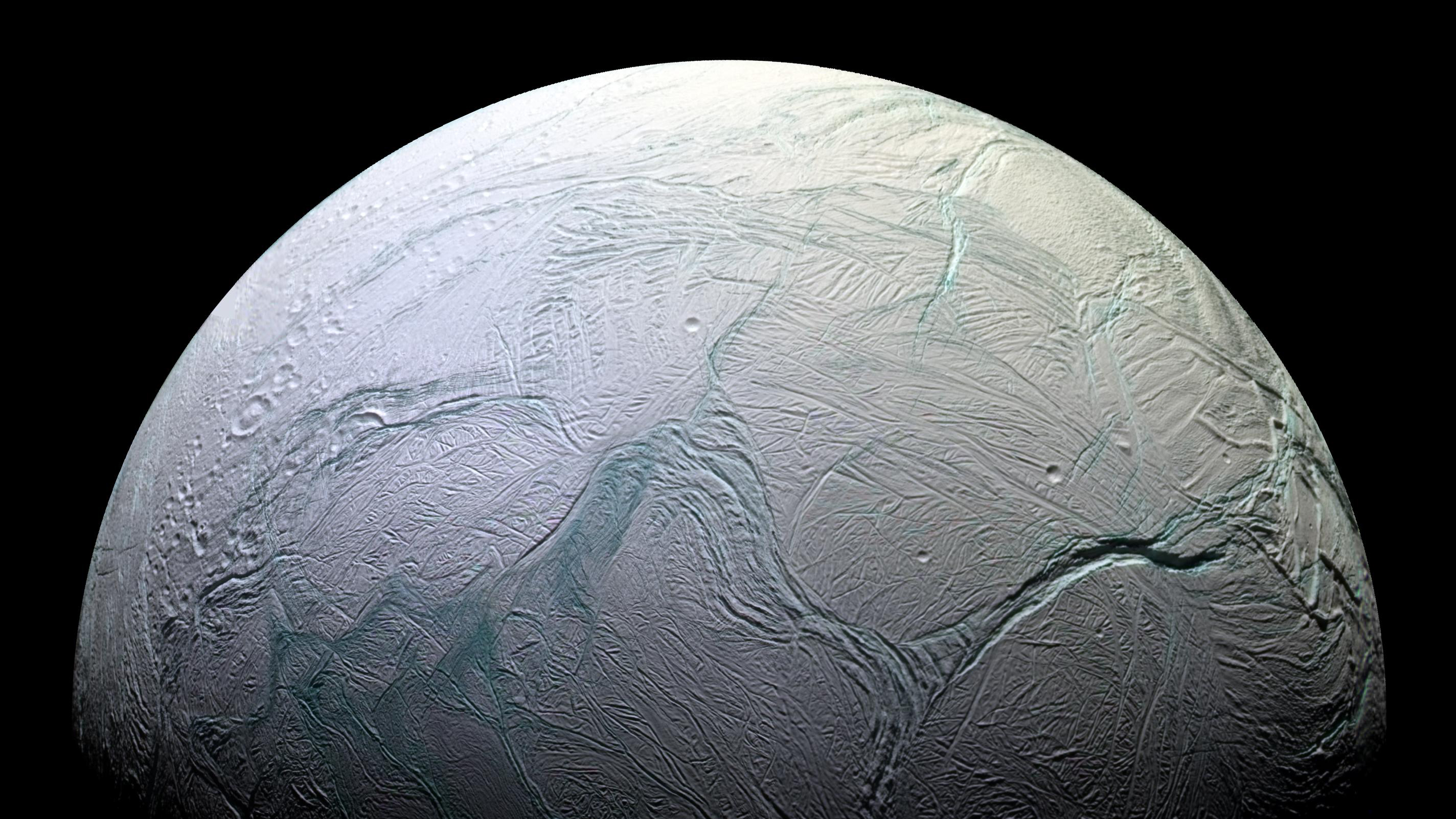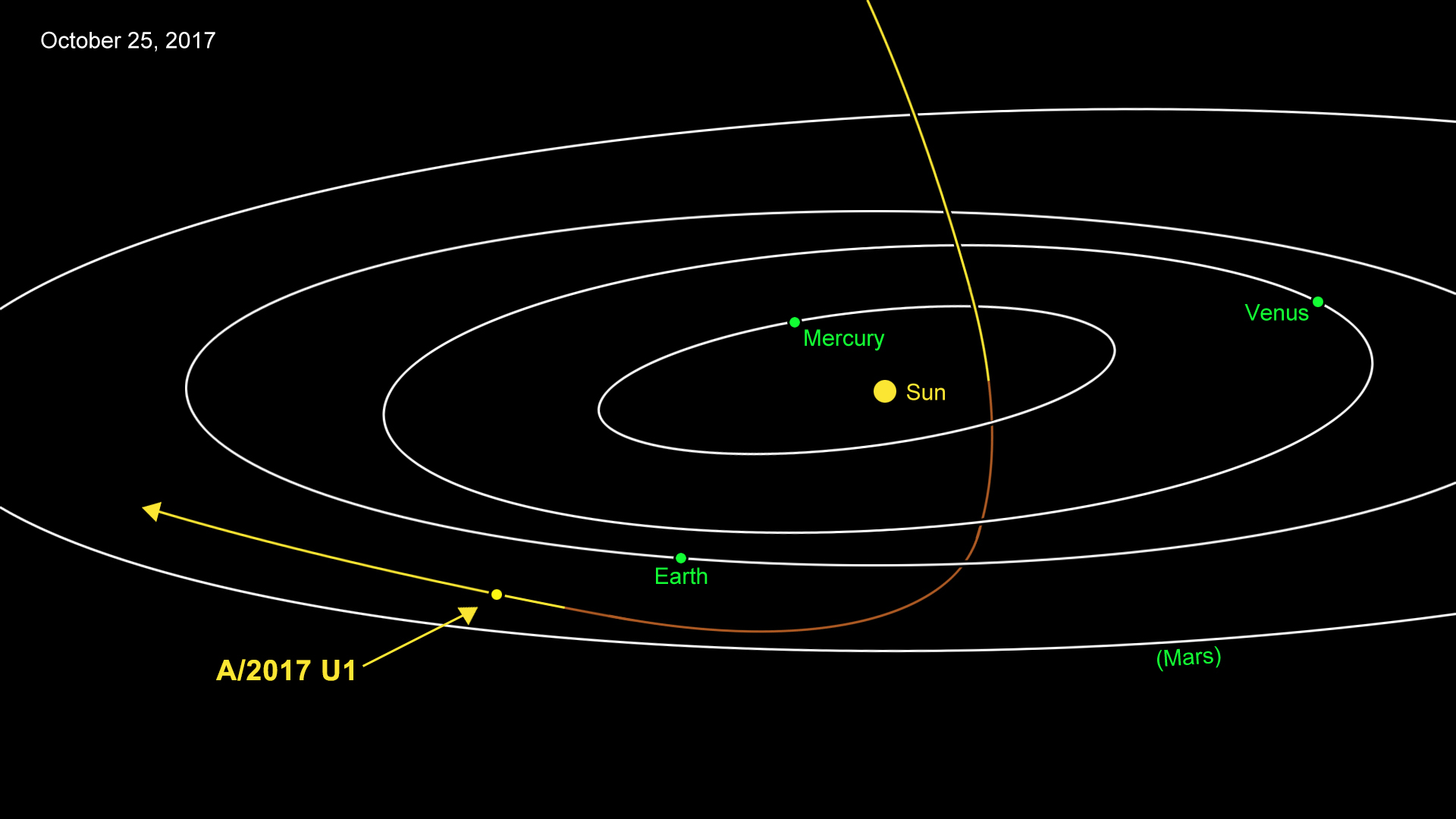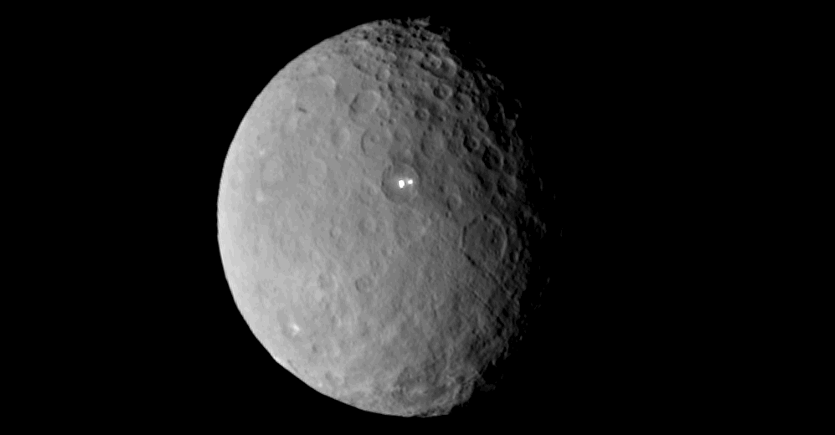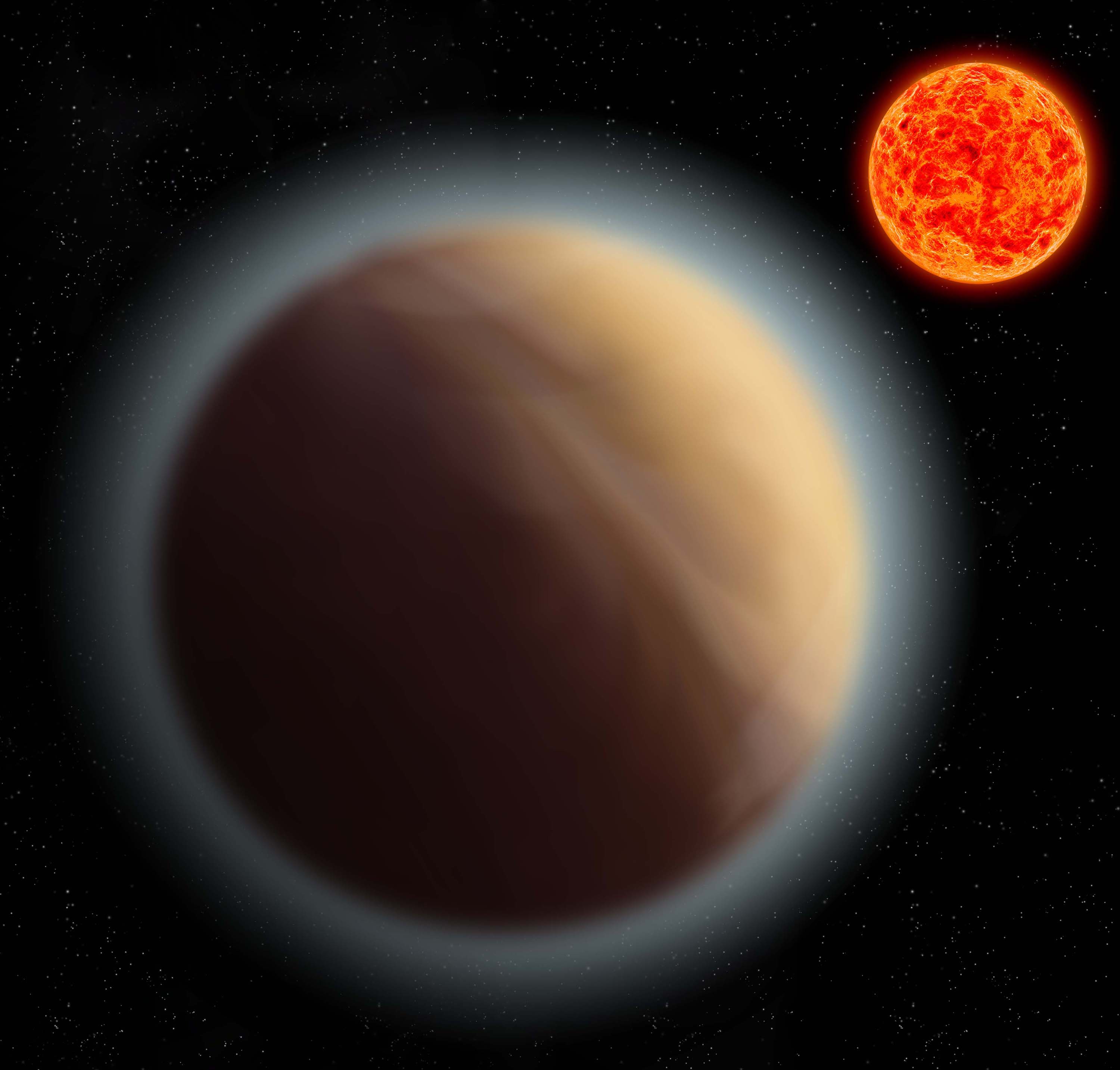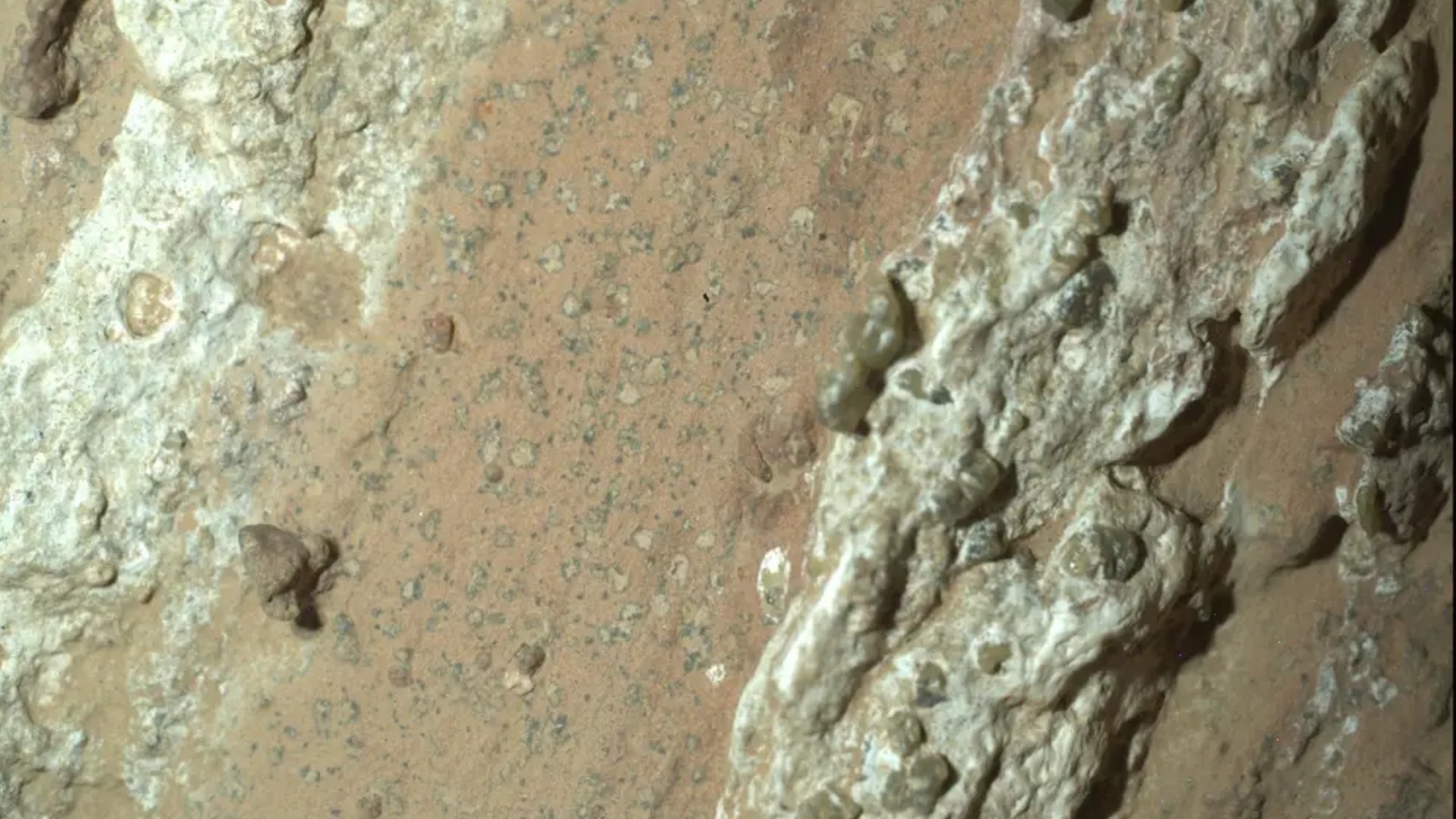The Greatest Space Science Stories of 2017
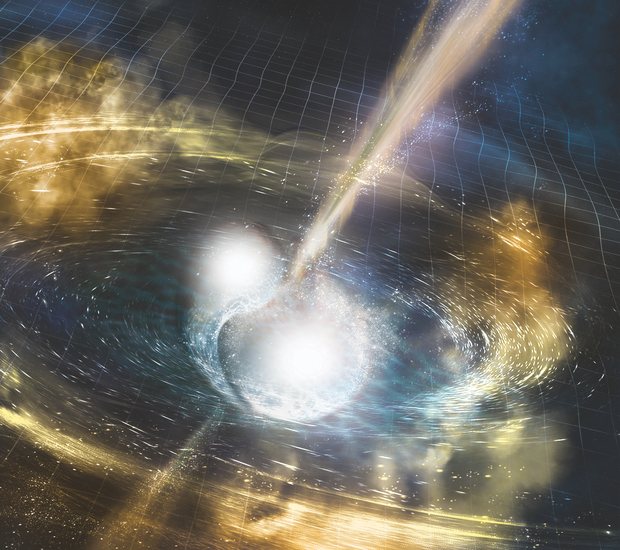
It was a big year for space science, which means it was a tough job picking our favorites Here they are: are Space.com's top 10 favorite science stories of 2017.
2017 may go down in history as the year when a new era of "multi-messenger" astronomy truly got off the ground, thanks to one incredible discovery. The past 12 months have also been full of awesome discoveries about alien planets orbiting distant stars, including the detection of seven Earth-size planets around a single sun. And while scientists had to say farewell to the Cassini spacecraft, they also said hello to what might be an interstellar visitor to our solar system.
Be sure to tell us your favorite science stories in the comments!
1. Neutron-star crash
August 17 was a big day for astronomy; the kind of day that will be featured in history books and talked about as the beginning of a new era. On that day, astronomers made the first-ever observation of a cosmic event using both light and gravitational waves. This is called multi-messenger astronomy, and it's been compared to a person gaining a new sense of perception. Researchers have long been able to see the universe with light, now they can "hear" the universe with gravitational waves. When combined, the power of these two methods is greater than the sum of its parts. In fact, the journal Science named the discovery its 2017 Breakthrough of the Year.
The collision was detected by the Laser Interferometer Gravitational Wave Observatory (LIGO), as well as the Virgo gravitational wave detector, and by "more than 70 ground and space based observatories," according to a statement from LIGO. The gravitational-wave observatories were able to confirm that the event was two neutron stars colliding; the light-base observatories were then able to glean more specific information about those two objects, including confirmation that neutron-star mergers are responsible for producing much of the universe's supply of heavy elements, like gold. The detection therefore confirmed that we are all made of (neutron) star stuff. The discovery is the first demonstration of what astronomers will be able to accomplish with multi-messenger astronomy. [Full Story: First Detection of Gravitational Waves from Neutron-Star Crash Marks New Era of Astronomy]
2. 7 Earth-size planets around TRAPPIST-1
In early January, scientists announced the discovery of not one, not two, not six…but seven Earth-size plants orbiting the star TRAPPIST-1. NASA was quick to provide some imaginative imagery of what the planets might look like, and envisioned what it would be like to stand on the surface of those planets. There was even discussion about how life, if it arose on just one of the planets, might have been carried to some of the other worlds via asteroids.
Since January, scientists have found reasons to doubt whether these planets could ever harbor life, and reminded the public that it will require much more advanced instruments to even begin to search for signs of habitability. But the discovery wasn't so much about actually finding life elsewhere in the universe, but of reminding us of the great potential the universe has to offer. This was an invigorating discovery for scientists and non-scientists alike, and a solid reminder of why humanity should continue to invest in ever-more advanced telescopes. The TRAPPIST-1 system is like something from the pages of a science-fiction novel, and it reminded us of the unimaginable worlds we have yet to discover. [Full Story: Major Discovery! 7 Earth-Size Alien Planets Circle Nearby Star]
Breaking space news, the latest updates on rocket launches, skywatching events and more!
3. The Great American Total Solar Eclipse
On Aug. 21, for the first time in nearly 100 years, a total solar eclipse crossed the U.S. from coast to coast. Along a narrow path stretching from Oregon to South Carolina, people watched as the moon blocked out the disk of sun, transforming night into day and revealing hidden layers of the sun's atmosphere, for just a few brief moments.
Cities both large and small welcomed the onslaught of visitors who drove into the path of totality (the area from which the total eclipse was visible), which was only about 70 miles wide. People scrambled to find eclipse glasses (and some shady dealers took advantage of that), and prayed for clear skies. And many, many people watched the event online from outside the path.
While a total eclipse takes place somewhere on Earth about every 18 months, they are not often visible from easy-to-get-to places or highly populated areas. The next total solar eclipse to cross part of the contiguous U.S. will be in 2024. If you're someone who has added "See a total solar eclipse" to your bucket list, let me tell from my own experience in August: seeing one total solar eclipse will only leave you hungry for another. Don't wait. [Here Are the Most Amazing Photos and Videos of the 2017 Solar Eclipse]
4. Enceladus' ocean
In April, NASA scientists announced the detection of a possible energy source for life in the liquid- water ocean on Saturn's icy moon Enceladus. Samples from the subsurface ocean were obtained by the Cassini spacecraft, which made multiple passes through plumes of water that erupt from Enceladus' icy crust.
Once thought to be a solid chuck of ice orbiting the ringed planet, Enceladus is now considered one of the most potentially habitable environments in the solar system (besides Earth). Under the moon's solid, icy surface lies a global, liquid water ocean, and on the floor of that subterranean sea, hot water vents could support ecosystems like those found at the bottom of the ocean on Earth.
The new study identified the presence of molecular hydrogen (two hydrogen molecules bound together), which can serve as an energy source for life. The molecular hydrogen could be forming through chemical reactions between hot water and rock, generating a veritable food supply for potential life. [Potential Energy Source for Life Spotted on Saturn Moon Enceladus]
5. Cassini's "Grand Finale" at Saturn
The Cassini spacecraft is one of NASA's great success stories. During its 13-year tenure at Saturn, the probe provided an up-close view of the planet's swooping rings, its turbulent cloud tops and many of its invisible features, like its magnetic field. Cassini also revealed a surprising amount of complexity in Saturn's moons. The probe found oceans of liquid methane, plumes of water erupting from an ice ball, and strange red streaks.
NASA was finally forced to end the Cassini mission in September because the probe was running out of fuel. The final stamp on an already great legacy was a dramatic series of loops that took it between the planet and the innermost rings, followed by a dive into Saturn's atmosphere that ultimately caused the probe to break apart. No space probe had ever flown directly into Saturn's atmosphere before, and Cassini was able to send back some in-situ data. Researchers are still digging through the data it collected during its final year at Saturn. [Cassini's Saturn Crash 2017: 'Grand Finale' at the Ringed Planet]
6. Gravitational waves are booming
It's been two years since scientists made the first-ever direct detection of gravitational waves — ripples in the cosmic fabric first predicted by Albert Einstein — and the field is absolutely booming. The Laser Interferometer Gravitation Wave Observatory, which made that initial discovery in 2015, announced the detection of gravitational waves from a neutron-star merger, which were also detected by more than 70 light-based telescopes and observatories. This was such a significant moment for astronomy, that we've chosen it as the No. 2 story on our list.
Perhaps the biggest indicator of this field's significance was the announcement that three scientists who pioneered the design and construction of LIGO were awarded the Nobel Prize in physics.
LIGO also found three more black-hole mergers, which makes five confirmed black-hole mergers spotted by LIGO. The details of those detections are interesting in their own right, but scientists are mostly excited that they are well on the way to having a large population of black-hole binaries to study. With a large population of black holes, scientists can begin to understand what characteristics are shared by these objects, and which characteristics are unique. From there, they can begin to understand how these objects form, and how they fit into the larger story of the universe.
Wait, there's more! The Virgo gravitational-wave detector came online in Italy in August, and made its first detection almost right away, spotting one of the black-hole mergers that was also seen by LIGO. By working together, LIGO and Virgo will be able to better confirm the detection of gravitational-wave signals, and do a slightly better job of narrowing down where they came from.
It's been a big year for gravitational waves, and the future is bright for this budding field.
7. First interstellar object detected in our solar system
Researchers may have made the first-ever detection of an object in Earth's solar system that originated somewhere outside the system. The space rock, named 'Oumuamua, was first detected in October by scientists using the Pan-STARRS 1 telescope in Hawaii.
There are many ways a space rock could be flung out of the solar system. Scientists assume that space rocks from far away can occasionally wander toward Earth's sun, but identifying those rocks as alien visitors is difficult. In this case, the researchers modeled the path that the object will take based on its current trajectory, and found that it is headed out of the solar system (meaning it wasn't born in an orbit around the sun). Many space rocks get ejected from the solar system by the gravity of other (usually larger) objects, but 'Oumuamua doesn't seem to have undergone any such interactions. Additional observations are being carried out to try and confirm this preliminary conclusion. [Full Story: Visitor from Far, Far Away: Interstellar Object Spotted in Our Solar System]
8. Ingredients for life on dwarf planet Ceres
Ceres is the largest object in the asteroid belt between Mars and Jupiter, and is dually categorized as both a dwarf planet and an asteroid. At first glance, its cratered and barren surface certainly doesn't look like a place where life would form. But the more scientists learn about Ceres, the more habitable it looks.
In February, researchers announced that they had detected organic molecules on Ceres' surface. Organic molecules are necessary for the formation of life as we know it, although they do not indicate the presence of life. That discovery is particularly significant when paired with the fact that Ceres may have a liquid water ocean beneath its surface. The presence of both liquid water and organic molecules presents the possibility that primitive life emerged there. [Full Story: Life's Building Blocks Found on Dwarf Planet Ceres]
9. Atmosphere on nearly Earth-size planet
For the first time, researchers have observed the atmosphere of distant planet that is just slightly larger than the Earth. The planet, called GJ 1132b, appears to have a very hot and very thick atmosphere, which confirms earlier suspicions that this world has more in common with Venus than with Earth.
The direct observation of this planet's atmosphere is significant because thus far, astronomers have been able to directly study atmospheres only around gas giant planets like Jupiter. In at least one case, researchers directly observed the atmosphere of a planet eight times the mass of Earth. GJ 1132b, on the other hand, has a radius about 1.4 times that of Earth, and a mass 1.6 times that of Earth.
Alien planet atmospheres may contain evidence of life, so scientists are working hard to understand what to look for in those atmospheres, and how to look for it. Studying Earth-size exoplanet atmospheres remains a significant challenge for existing telescopes, but future instruments are being designed to target those studies. [Full Story: Discovery! Atmosphere Spotted on Nearly Earth-Size Exoplanet in First]
10. Evidence for flowing water on Mars might be drying up
In 2015, researchers announced that they'd found evidence of liquid water on the surface of Mars. NASA later supported the claim that dark streaks on Martian hillsides (called recurring slope lineae, or RSL's) could be caused by liquid water mixed with high levels of salt. The salt would prevent the water from freezing or instantly turning into a gas in the thin Martian atmosphere.
But alternative explanations for those dark streaks have since emerged, and in November, a study added to that growing pile. The new work suggested that the dark streaks could be rivulets of sand, streaming down the sides of the dunes. This is a common phenomenon in what are called granular materials, such as sand. NASA published a news release about the new paper, implying that the conclusions were sound. But the story wrapped up with the authors of the new research noting that a definitive decision on the nature of the dark streaks would likely require direct study of a sample from the RSLs, something that seems unlikely to happen soon. [Full Story: Weird Dark Streaks on Mars May Not Be Flowing Water After All]
Runners-up
There were quite a few amazing space stories this year that didn't quite make our top 10 list. Here are some of the runners up.
- New observations showed that Jupiter's auroras are even more mysterious and complex than researchers previously thought. They appear to be totally unlike Earth's auroras, as evidence by the fact that the north and south pole auroras are asymmetric.
- A new measurement of the age of the moon found that Earth's neighbor is slightly older than some previous estimates suggested.
- The speed of the universe's expansion is a major mystery in astrophysics at the moment, with two seemingly reliable measurement approaches producing slightly different results. A new study solidified one of those measurements, which means the mismatch likely lies in scientists' fundamental understanding of universal expansion.
- The hottest exoplanet ever discovered is a real scorcher — in fact, it's hotter than the surface of some stars. KELT-9b's is a blazing 7,800 degrees Fahrenheit (4,300 degrees Celsius), or just 2,200 degrees F (1,200 degrees C) cooler than the surface of the sun.
- For the first time in 37 years, scientists turned on the backup thrusters on the Voyager 1 probe. The test firing gave the mission managers assurance that if the probe's primary thrusters fail, the spacecraft will still be able to point itself toward Earth and send back data from the edge of the solar system.
- "Boyajian's star" (previously known as "Tabby's star") has continued its completely perplexing pattern of dimming and brightening at irregular intervals. This year, researchers more or less ruled out the possibility that the behavior was due to an alien megastructure orbiting the star. But that doesn't make this object any less mysterious to astronomers. In May, various telescopes and observatories joined together to study the star during one of these strange bouts of dimming and brightening.
- If Mars was once a watery haven, what caused the planet to become a cold, lifeless rock? NASA's Maven spacecraft is continuing to study the mystery of Mars' missing atmosphere.
- In September, the sun belched up the largest solar flare in over a decade. The enormous eruption sent high-energy particles hurtling at the Earth, causing interruptions in some radio communications frequencies.
Follow Calla Cofield @callacofield. Follow us @Spacedotcom, Facebook and Google+. Original article on Space.com.

Calla Cofield joined Space.com's crew in October 2014. She enjoys writing about black holes, exploding stars, ripples in space-time, science in comic books, and all the mysteries of the cosmos. Prior to joining Space.com Calla worked as a freelance writer, with her work appearing in APS News, Symmetry magazine, Scientific American, Nature News, Physics World, and others. From 2010 to 2014 she was a producer for The Physics Central Podcast. Previously, Calla worked at the American Museum of Natural History in New York City (hands down the best office building ever) and SLAC National Accelerator Laboratory in California. Calla studied physics at the University of Massachusetts, Amherst and is originally from Sandy, Utah. In 2018, Calla left Space.com to join NASA's Jet Propulsion Laboratory media team where she oversees astronomy, physics, exoplanets and the Cold Atom Lab mission. She has been underground at three of the largest particle accelerators in the world and would really like to know what the heck dark matter is. Contact Calla via: E-Mail – Twitter
